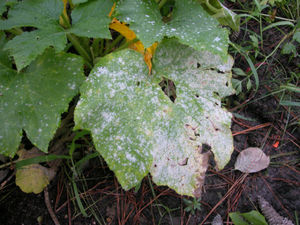There are more to the Aster family than the cute and colorful daisy like flowers that pepper the countryside. The selections below are all from the Aster family and plants that you may not have thought of as choices for your garden or landscape. I’ve given a brief overview of each plant and some planting help on where in your landscape it should be planted.
Ageratina altissima (L.) King & H.E. Robins. var. altissima (white snakeroot)
This 4-6 foot tall clump forming perennial will need to be spaced 3-4 feet apart in moist, alkaline, well drained soil. Erect dark purple/brown stems with white fluffy flowers from August to October; it is a great butterfly draw. Make sure that White Snakeroot is planted in partial sun to full shade. Historically it has been used as a medicinal treatment for colds, liver disease, and fever.
Ampelaster carolinianus (Climbing Aster)
This fragrant vine may get invasive, so take care to keep an eye on it as it grows. It will grow up to 12 feet long and needs a spacing of 4 feet across. It prefers to grow in sun to partial shade in moist soil. Butterflies and birds love this vine. Expect pink/purple blooms in late summer to mid fall. You may divide the rootball on this one to propagate.
Boltonia asteroides (L.) L’Her. (White Doll’s daisy)
This plant has large white flowers that look like daisies. They get from 2-4 feet tall and are very adaptable. They are good for naturalization and for attracting butterflies. Their white or pink flowers will bloom from July to September. Plant this plant in full sun or partial shade.
Chrysogonum virginianum (L.) (Green and Gold)
This perennial makes a wonderful ground cover as it only grows 6-9 inches tall. It prefers full to partial shade and moist soil. Its blooms are 5-petal and daisy like appearing both spring and fall. It has dark green foliage.
Coreopsis auriculata L. (Mouse-ear Coreopsis, Early Coreopsis, Lobed Tickseed)
This flower gets 6-12 inches high and needs spacing of 9-12 inches. It loves full sun and has average water needs. Its bright yellow flowers will bloom late spring to mid summer. You can deadhead to prolong the bloom time. It has herbaceous foliage and is a slow spreader with low maintanence needs. To propagate you can divide rootball or direct sow seed outdoors directly in the ground.
Coreopsis tripteris L. (Tall Tickseed)
This tickseed flower gets 4-6 feet tall and needs spacing of 2-3 feet. It likes full sun and is easy to grow in wet well-drained soil.Shorter flowers will appear in drier areas. It has bright yellow blooms mid summer to fall. This is a self-seeder flower that will give you a longer lasting garden. Deadhead the flowers for optimum bloom time. It is also heat, drought, and humidity tolerant.
Echinacea pallida (Nutt.) Nutt. (Pale Purple Coneflower)
This flower gets up to 3-4 feet tall and needs a 12-18 inch spread zone. It prefers full sun and has average water needs. Its ray flowers are pink, magenta, or white on stiff erect stems and will appear in mid summer to late fall. It has herbaceous smooth leaves and is deer resistant. Butterflies, songbirds, and goldfinches love this flower. To propagate you can direct sow from seed outdoors.
Erigeron pulchellus Michx. (Robin’s Plantain)
This perennial grows up to 2 feet and has hairy stems. It will have white flowers or lavender flowers that will fade to white over time. It blooms in mid spring to summer. Robin’s plantain prefers full sun and well drained soil. Each flower has 50-100 rays and are thin petaled like a daisy. Medicinally, this was used as a tea for a diuretic and astringent. BEWARE: This plant can cause dermatitis.
Eupatoriadelphus fistulosus (Barratt) King & H. E. Robins. (Trumpetweed)
This flowering plant gets up to 2-6 feet tall and prefers full sun. It has a large head of purple or dull pink flowers from July to September. Its blooms have nectar for butterflies, and will attract many to your garden. This is a good choice for a bog garden, especially with Sarracenia.
Eupatorium purpureum L. (Sweetscented Joepyeweed)
This plant will get 3-4 feet high and have an equal spread. It prefers sun and partial shade and is very carefree. It will have pink, purple, or near white blooms from summer to fall. You can bag the seed heads to capture the seed to propagate. You need to sow the seed ASAP as it is not a good candidate for storage. You can cut to the ground in the winter or leave unattended.
Helenium autumnale L. (Common Sneezeweed)
This upright hardy reaches a height of 4-6 feet and a spread of 3-4 feet. It will bloom August to October in the red, yellow, and orange spectrum. It does best in full sun and moist soil. You can collect seed heads when the flowers fade to collect seed; or divide in spring or fall to propagate.
Helianthus angustifolius L. (Swamp Sunflower)
This flower gets up to 6-8 feet tall and needs a spacing zone of 9-12 inches. It loves full sun and has high moisture needs. Butterflies and birds love it, birds mainly for the seeds. It has bright yellow flowers in mid fall. You can plant this in just about any soil so long as you don’t let it dry out. It is deer resistant. Propagate this by dividing the root ball. Cut back after bloom to really insure a healthy growth pattern the next year.
Helianthus tuberosus L. (Jerusalem artichoke)
This plant gets up to 8-10 feet tall and has a spacing need of 2-3 feet. It prefers full sun and neutral pH soil, and is a rapid grower. It will have gold or yellow flowers in late summer to early fall. You can propagate this by dividing the rootball. The rhizomes can be eaten like a potato. It is a good plant for privacy blinds or borders.


